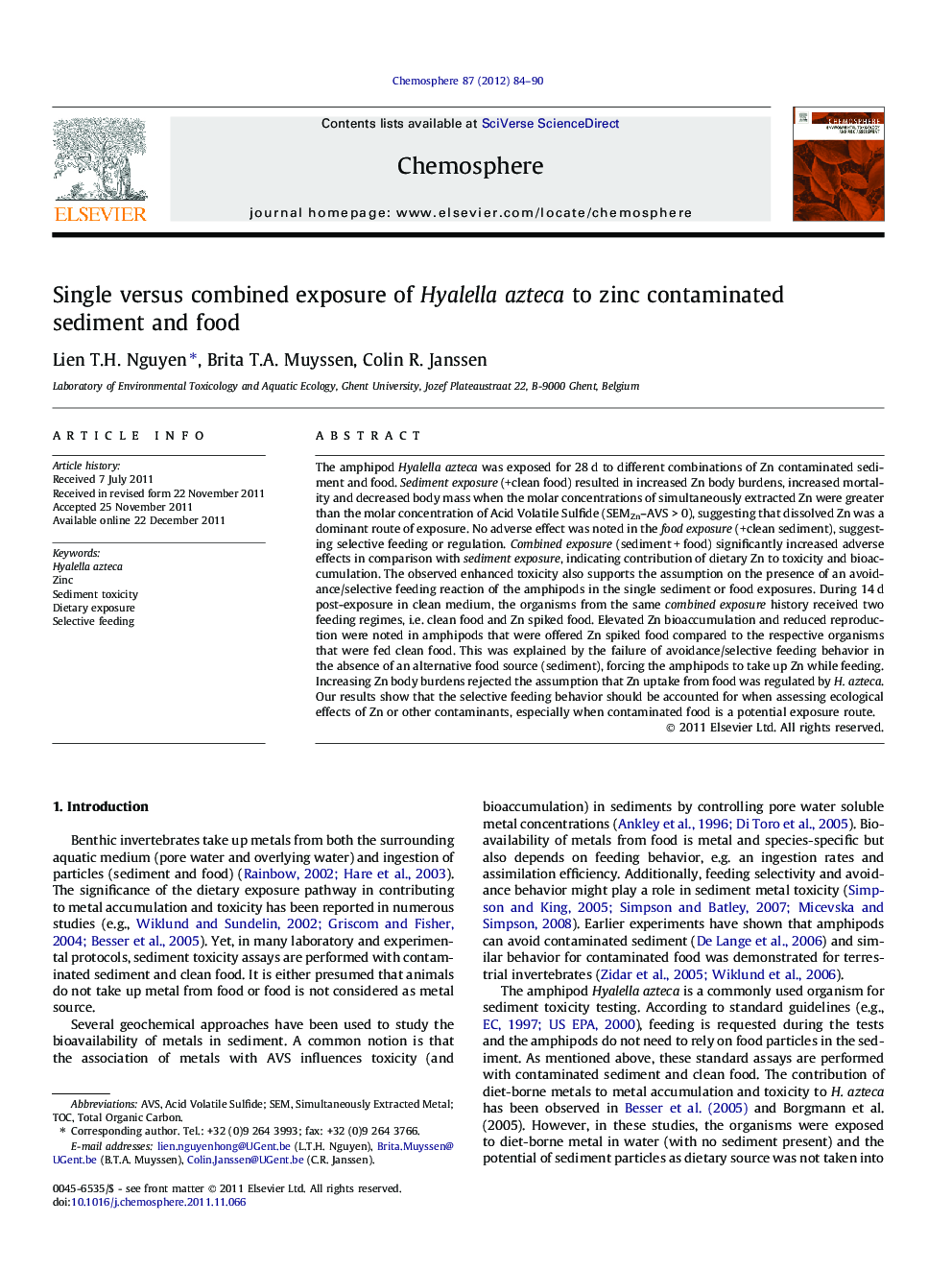| کد مقاله | کد نشریه | سال انتشار | مقاله انگلیسی | نسخه تمام متن |
|---|---|---|---|---|
| 4410443 | 1307544 | 2012 | 7 صفحه PDF | دانلود رایگان |

The amphipod Hyalella azteca was exposed for 28 d to different combinations of Zn contaminated sediment and food. Sediment exposure (+clean food) resulted in increased Zn body burdens, increased mortality and decreased body mass when the molar concentrations of simultaneously extracted Zn were greater than the molar concentration of Acid Volatile Sulfide (SEMZn–AVS > 0), suggesting that dissolved Zn was a dominant route of exposure. No adverse effect was noted in the foodexposure (+clean sediment), suggesting selective feeding or regulation. Combined exposure (sediment + food) significantly increased adverse effects in comparison with sediment exposure, indicating contribution of dietary Zn to toxicity and bioaccumulation. The observed enhanced toxicity also supports the assumption on the presence of an avoidance/selective feeding reaction of the amphipods in the single sediment or food exposures. During 14 d post-exposure in clean medium, the organisms from the same combined exposure history received two feeding regimes, i.e. clean food and Zn spiked food. Elevated Zn bioaccumulation and reduced reproduction were noted in amphipods that were offered Zn spiked food compared to the respective organisms that were fed clean food. This was explained by the failure of avoidance/selective feeding behavior in the absence of an alternative food source (sediment), forcing the amphipods to take up Zn while feeding. Increasing Zn body burdens rejected the assumption that Zn uptake from food was regulated by H. azteca. Our results show that the selective feeding behavior should be accounted for when assessing ecological effects of Zn or other contaminants, especially when contaminated food is a potential exposure route.
► We study single and combined exposure of Hyalella azteca to Zn in sediment and food.
► Sediment exposure results in Zn toxicity and accumulation at [SEMZn–AVS] > 0.
► In Zn food exposures no adverse effects were observed suggesting selective feeding.
► In the combined exposure dietary Zn contributed to toxicity and accumulation.
► During post-exposure additional evidence for selective feeding was obtained.
Journal: Chemosphere - Volume 87, Issue 1, March 2012, Pages 84–90